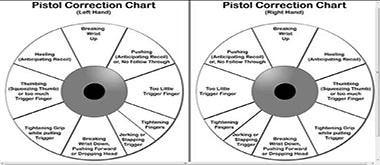I don't think absolute trigger weight matters as much as that the trigger path should be "teachable" to the learner.
Even a complete novice will understand trigger path principles if one is able to transfer that knowledge to them in a manner in which they are receptive. For example, for an adult of a certain age-bracket, you may be able to describe the act of opening a door and walking through it, versus "Kramer-ing" through it (a character from the TV comedy series "Seinfeld"). For a child, using more concrete examples like "feels like sand rubbing" or "dragging your foot across a cobblestone path" may work just as well as talking to your shooting buddy about trigger creep.
When my daughter first started, I had her experiment with many different triggers -all dry-fire so that I was taking the anticipation of recoil, blast, and noise out of the equation- and having her focus on what each trigger path "felt like," and then using different techniques to manage the trigger paths, to show her what worked better/worse -for her- for each.
Some are light. Some are heavy. Some have a crisp break. Some have a rolling break. Some have a really short travel, others, much longer. Some have more creep. Some stack.
This translated well then to our shopping together for "her guns," where she was then able to, with my guidance, find guns which fit her well in terms of the trigger/grip relationship, and with the type of trigger path that she needed at the time: all of which were important, because she was only 8 at the time.
Later, that understanding allowed her to not only pick, but also install and/or refine the trigger on her AR-15 and Glock 17.

